Why some key Rookie Cards lag behind the rest
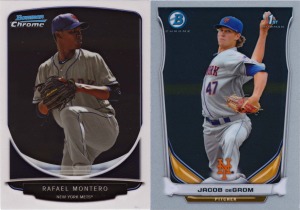
This is the tale of two pitchers. Both made their major league debuts at Citi Field against the Yankees on consecutive days this past May. Both pitched well but were denied wins because of the failings of the rest of their team. One would be sent back to the minors after four starts, only returning for a brief stint with two starts and a relief appearance before roster expansion. The other would spend the remainder of the season in the majors and would be a leading candidate for NL Rookie of the Year. One would have Rookie Cards in two products by the end of August while the other had his first professional cards released just two weeks before his debut and, four months after his debut, is still waiting for his first Rookie Card. The one with two Rookie Cards despite only brief MLB appearances is Rafael Montero. The Rookie of the Year contender with no Rookie Cards is Jacob deGrom.
On the surface, this looks like just the luck of the draw. Some players get the royal Rookie Card treatment, others get overlooked. Most of the time, the difference is due to when a player debuts during the year. August and September debuts usually correspond to lots of Rookie Cards the next year, while late June and July debuts result in just a few Rookie Cards later in the year. The reason for this is lead time – the time it takes to incorporate a new player into a sports card product. Historical evidence suggests a minimum two month lead time for modern baseball card products. That mostly explains what happens with mid and late season debuts, but what about early season debuts? That’s where things get more interesting and the Montero/deGrom dichotomy takes shape.
One of my goals with this blog is to explore the connection between the players on the field and their cardboard incarnations. When it comes to when, if, and how often players receive Rookie Cards, a key factor is prospect inertia. A player with several baseball cards as a prospect is more likely to have Rookie Cards earlier and more often than a player with one or no prospect cards. It would be logical to assume that the same factors that determine whether a player will have cards as a prospect would affect their Rookie Cards. For that to be the case though, changes in prospect status would need to be reflected in a player’s cards. As we’ll see over the last four years, this is not necessarily the case.
Read more »
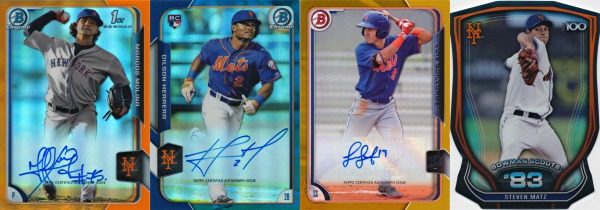 The evolution of the Bowman brand has been interesting lately. Since the last major redesign in 2012, Bowman has added ice parallels, wave refractors, and mini shimmer refractors, removed the First Bowman Card designation, added a new 1st Bowman designation, introduced Bowman Black autographs, confused collectors with 2013 Kris Bryant Bowman Chrome autographs in 2014 products, added wrapper redemptions, ended wrapper redemptions, dropped the pretense of a “base set” in Bowman Draft, and much, much more. After three years of incremental improvements, Topps reshuffled the deck in 2015 and brought order to an increasingly chaotic product.
The evolution of the Bowman brand has been interesting lately. Since the last major redesign in 2012, Bowman has added ice parallels, wave refractors, and mini shimmer refractors, removed the First Bowman Card designation, added a new 1st Bowman designation, introduced Bowman Black autographs, confused collectors with 2013 Kris Bryant Bowman Chrome autographs in 2014 products, added wrapper redemptions, ended wrapper redemptions, dropped the pretense of a “base set” in Bowman Draft, and much, much more. After three years of incremental improvements, Topps reshuffled the deck in 2015 and brought order to an increasingly chaotic product.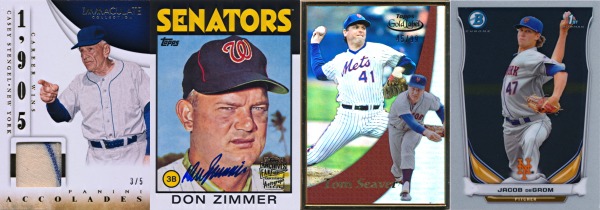

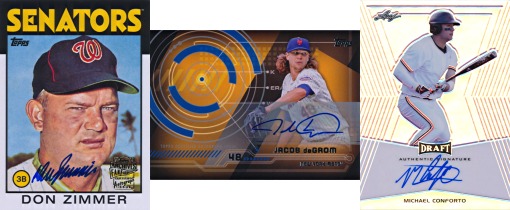
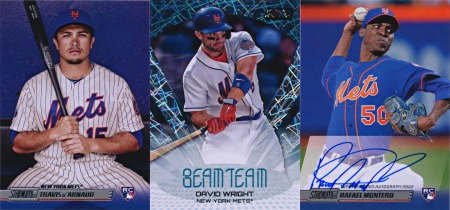

Recent Comments